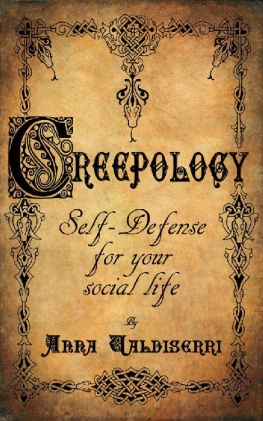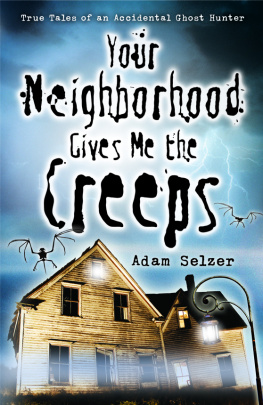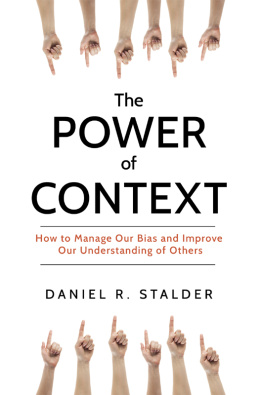Creepology Self-defense for your social life.
Copyright 2017 by Anna Valdiserri.All rights reserved.
Written by AnnaValdiserri.
Cover Illustration Copyright 2017 by Anna Valdiserri.
Cover design by Anna Valdiserri.
All rights reserved. Without limitingthe rights under the copyright reserved above, no part of this publication maybe reproduced, stored in, or introduced into a retrieval system, or transmittedin any form or by any means (electronic, mechanical, photocopying, recording,or otherwise) without prior written permission of Anna Valdiserri.
While every effort has been made toensure the accuracy and legitimacy of the references, referrals, and links(collectively Links) presented in this e-book, Anna Valdiserri is notresponsible or liable for broken Links or missing or fallacious information atthe Links. Any links to a specific product, process, web site, or service donot constitute or imply an endorsement by Anna Valdiserri of same, or itsproducer or provider. The views and opinions contained at any Links do notnecessarily express or reflect those of Anna Valdiserri.
Material in this book is foreducational purposes only. This book is sold with the understanding thatneither the publisher nor the author is engaged in rendering legal, medical,psychological, or any other professional service. Neither the publisher nor theauthor assume any liability for any errors or omissions or for how this book orits contents are used or interpreted or for any consequences resulting directlyor indirectly from the use of this book. For legal, medical, psychologicaladvice or any other, please consult the appropriate professionals.
For updates, new releases, usefullinks, and other information, please check out:
https://www.amazon.com/Anna-Valdiserri/e/B00XCPAUW8
https://www.facebook.com/AnnaValdiserriWriter
https://godsbastard.wordpress.com/
Contents
Foreword by Rory Miller
Mostself-defense training isnt appropriate for the real world. Im not talkingtechniques that would never work, taught by people who have never used them.The problem is more fundamental.
This mightbe over generalizing (a bit) but standard self-defense is taught as acollection of unrealistically complex solutions to unrealistically simpleproblems. So instructors focus on stranger danger when domestic violence ismuch more prevalent. They teach techniques against multiple opponents and nevereven consider what might happen if you injure a gang member while your wholefamily has to live in that gangs territory. All situations have consequencesand context.
Self-defense,as a rule, is not just aimed at the problems of middle-class privileged people.Its aimed at the imaginary problems of middle-class privileged people.
One subjectinstructors rarely address creepers. They are the low level sexual predatorsthat make so many womens lives miserable, yet are invisible to most men. Thisis a real problem, not an imaginary one. Its not the active shooter or thestranger jumping out of the bushes, which most people will never experience.Creepers are a problem that someone you know is dealing with right now.
Mostinstructors hand-wave past the complex stuff. Its easy to teach what to do legally and physically when a stranger raises his hand against you. Muchharder to teach what you can do legally, physically and socially about theguy who just happens to rub up against you whenever no one is watching.
Anna hastaken on this complex subject in this little book. For the people dealing withcreeps, its invaluable advice. For people teaching self-defense, its awake-up call.
Read thisone.
Acknowledgements
Withmany thanks to Rory Miller, who encouraged me to write this even when itreally, really sucked.
ToMary Kogut, who cheered all the way along and spotted countless typos.
ToShane Michael Murphy, who still hasnt learnt when to duck.
ToKelley Hanson Haeder, Kaja Sadowski, and Edward Hines, who suffered through thefirst draft or chunks thereof.
ToKasey Keckeisen, who gave me the opportunity to run this program at theViolence Dynamics seminar.
Andto countless creeps who gave me and still give me tons of practical experience.
Introduction
"No one has a social obligation to be victimized."
Joe Navarro
The creepy guy narrative
This issuch a common story that its become a clich.
A woman meetsa man. He may be a casual acquaintance; someone she met on public transport orat a shop. He may be a member of her social network; someone from work, school,a club or social activity, or a neighbor. The guy doesnt sit quite right withher. Sometimes theres something about him that bothers her right from thestart. Sometimes things start out OK, but soon she becomes uncomfortable.
She cantreally say what it is about him that unsettles her so much. Perhaps there issomething unnerving about the way he looks at her, staring at her too intently,or constantly looking at her out of the corner of his eyes. He may stand tooclose, or accidentally (yet conveniently) keep being in her way so that theyhave to brush against each other. He may seem too familiar in his physicalcontact; shaking hands for too long, insisting on hugs when everyone else justshakes hand, or insisting on kisses when everyone else just hugs. He may giveher compliments that seem too personal. He may open up to her too much, revealingpersonal details that she would have preferred to be ignorant of.
He may seekher presence more than their connection warrants, or linger near her afterwhatever business they may have is concluded. He may track her down in settingsoutside of their connection. If he is a colleague, he might suddenly turn up ather gym or her house, or track her down online. If he is a neighbor, he mightturn up at her work. Although he always has a valid reason for his presence nobody could accuse him of stalking the fact that he keeps turning up isstarting to concern her. Conversely, he may only ever be where hes supposed tobe, but the likelihood of his presence makes her dread that place.
Whatever heis doing, his behavior is just ever-so-slightly off. Nothing that seemsserious. Nothing she can put a finger on. Nothing that makes sense when shetries to articulate it, even to herself. Definitely nothing she could get anyoutside help with. What is she going to tell people, that a guy smiles at hertoo much and she wants them to get him to stop?
All andstill, there is something not quite right about him, and she feels that keenly.What freaks her out even more is that he seems to be ignoring her discomfort.She knows that she is sending all the subtle negative signals she can think of,but he doesnt seem to be reading them. Shes definitely not encouraging him,yet he seems to be getting keener.
She mighttalk to her partner, friends, or colleagues about him. She might be told thathes a bit odd, but harmless. That he doesnt really mean it. That thats justthe way he is. She might be told off for being so judgmental. The poor guy isjust an awkward fellow who is doing his best; he just keeps messing up. Shemight be told that she needs to cut him some slack. She might be calledstuck-up or a bitch for insisting that she hates to have him near her. Shemight be told that its partly her fault: she must have led him on, and now hebelieves theyre friends, or more than friends. What is she going to do now? Turnon him and hurt his feelings? Is she really that kind of person?
She mightbe told that everything is OK. That her feelings on the subject are plainwrong, that she is seeing things that are not there, or that she is making amountain out of a molehill. She cant really say that those naysayers arewrong; after all, the guy hasnt done anything that bad. She cant point to anyone thing that justifies how she feels: nervous, fearful, besieged, sullied.Creeped out. Those feelings make no sense, but they will not go away.










